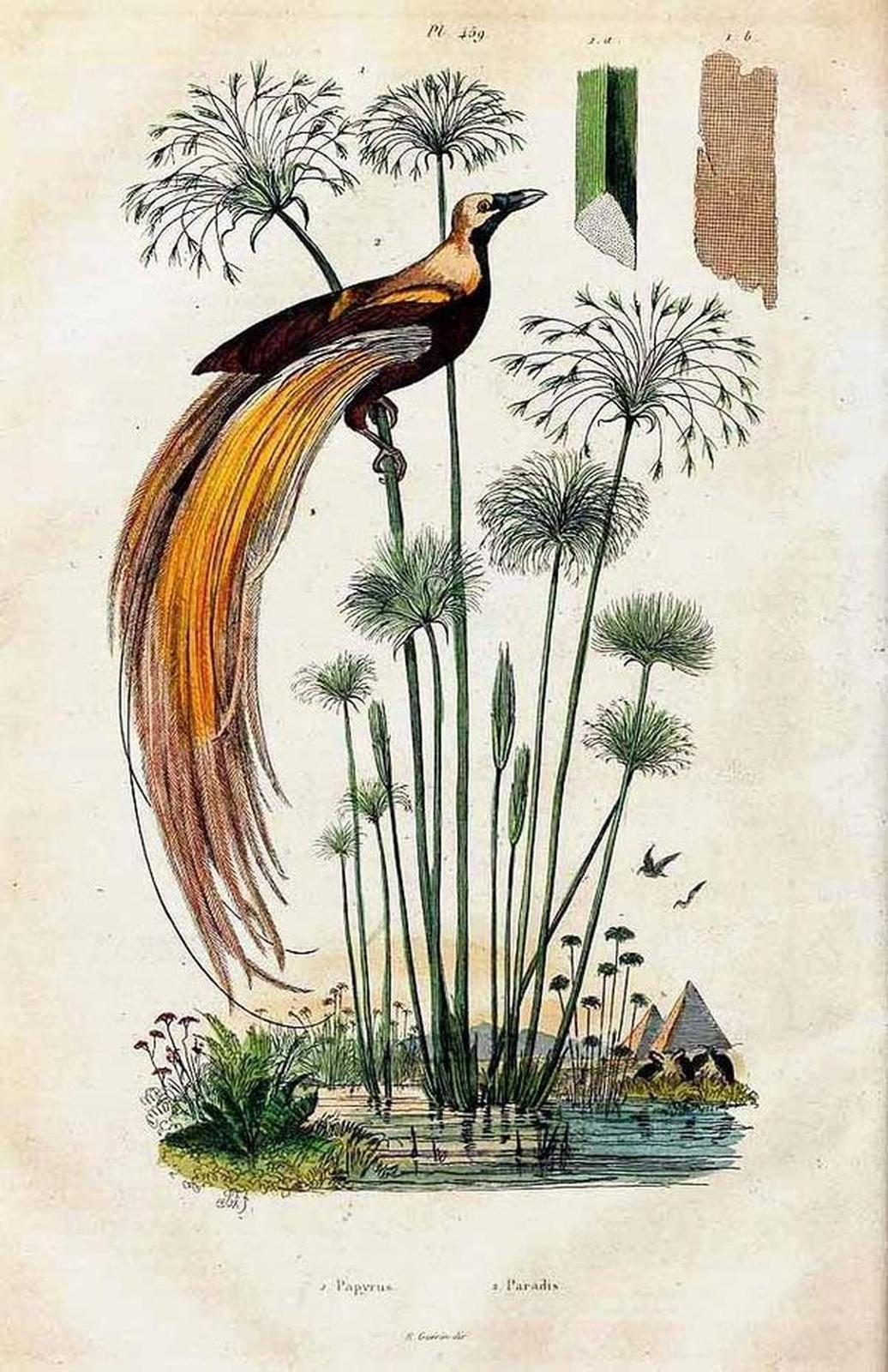Cyperus papyrus L.
CyperaceaeNatural de Egipto y la cuenca del Nilo, en la Antigüedad el papiro fue empleado por egipcios, griegos y romanos para la obtención de papel, y fue durante mucho tiempo de hecho el principal soporte de escritura para estas civilizaciones. No obstante el papiro aparece fundamentalmente asociado a la cultura del Antiguo Egipto. Esta planta crecía en abundancia en las riveras del Nilo, río sagrado y sustento económico de esta civilización. El papiro, junto con el loto, es representado en los capiteles de las columnas de sus templos, lo que demuestra la consideración prácticamente religiosa en la que los egipcios tenían a esta planta acuática. La cultura egipcia es además la primera en la historia de la que se tienen noticias de exploraciones con fines botánicos, tal y como siglos después harían los europeos con las expediciones científicas por América o Asia. Testimonio arqueológico del interés de los antiguos egipcios por la vegetación son los formidables relieves que representan diversos tipos de plantas en el llamado Jardín botánico del templo de Karnak, donde aparece la expedición enviada por el faraón Tutmosis III (h. 1450 a.C.) encargada de recoger nuevas especies. El uso del papiro en jardines como el del Real Alcázar obedece, en gran medida, a la moda romántica del siglo XIX de dotar a los jardines de plantas exóticas que pudieran vagamente recordar a culturas antiguas como la del Antiguo Egipto. Sin embargo en el caso que nos ocupa estos vínculos parecen ser más profundos y misteriosos pues, como Rodrigo Caro recogió en 1605, una escultura de Isis con Horus realizada en basalto negro aparecieron con motivo de unas obras en las inmediaciones del Patio de Banderas, lo que ha llevado a sostener la posible existencia de un templo dedicado a esta diosa Egipcia alrededor del siglo II a.C.
Procedencia
Europeo/MediterráneoCalendario
Hábitat
Morfología
 Acuática
Acuática
 Cilindrocónica
Cilindrocónica
 Simple
Simple
 Lanceolada
Lanceolada
 Oblonga
Oblonga
 Otras disposiciones
Otras disposiciones
 Entero
Entero
 Agudo
Agudo
 Perenne
Perenne
